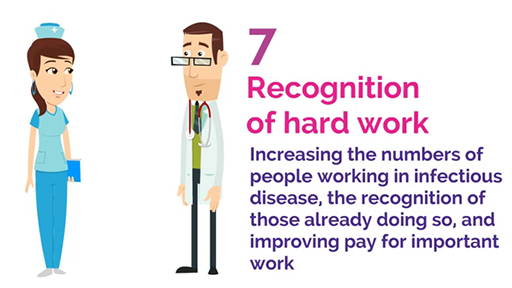Week 7: Reducing antibiotic use
Introduction
At this point in the course, you should appreciate that our use of antibiotics is contributing to the growing problem of antibiotic resistance. The Review on Antimicrobial Resistance led by Jim O’Neill (2016) proposed a ten-point plan to tackle the problem (Figure 1).
Begin this week by watching the following video which introduces the ten-point plan from the O’Neill report.

Transcript: Video 1 Ten steps to reducing antimicrobial resistance.
In Weeks 5 and 6, you looked at two of these ten points – surveillance and drugs. You saw how antibiotic-resistant infections can be tracked and how new antibiotics are being developed. This week, you will look at two other points mentioned in the O’Neill report – sanitation and hygiene, and rapid diagnostics.
By the end of this week, you should be able to:
- reflect on how antibiotic use can be reduced
- understand how infections are transmitted
- describe the role of good hygiene in reducing the spread of infectious diseases
- give examples of how the diagnosis of antibiotic-resistant infections can be improved to reduce antibiotic use.

